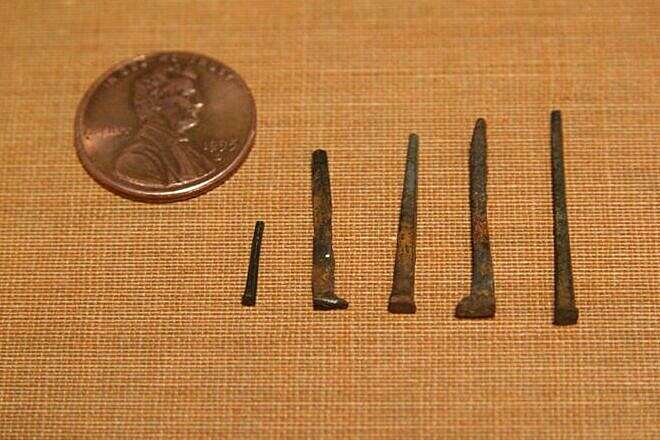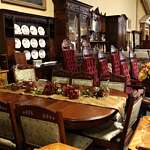Looking at antique furniture, we often seek clues for authenticity and age. There are many factors that show true historic construction, but one clue that is often overlooked is the type of nail used to hold the piece together. Nails in antique furniture are often barely noticeable, but they are another key to unlock the history of wooden pieces. The quest for the ideal nail has taken centuries of development. As Churchill noted, “To improve is to change, to be perfect is to change often.”
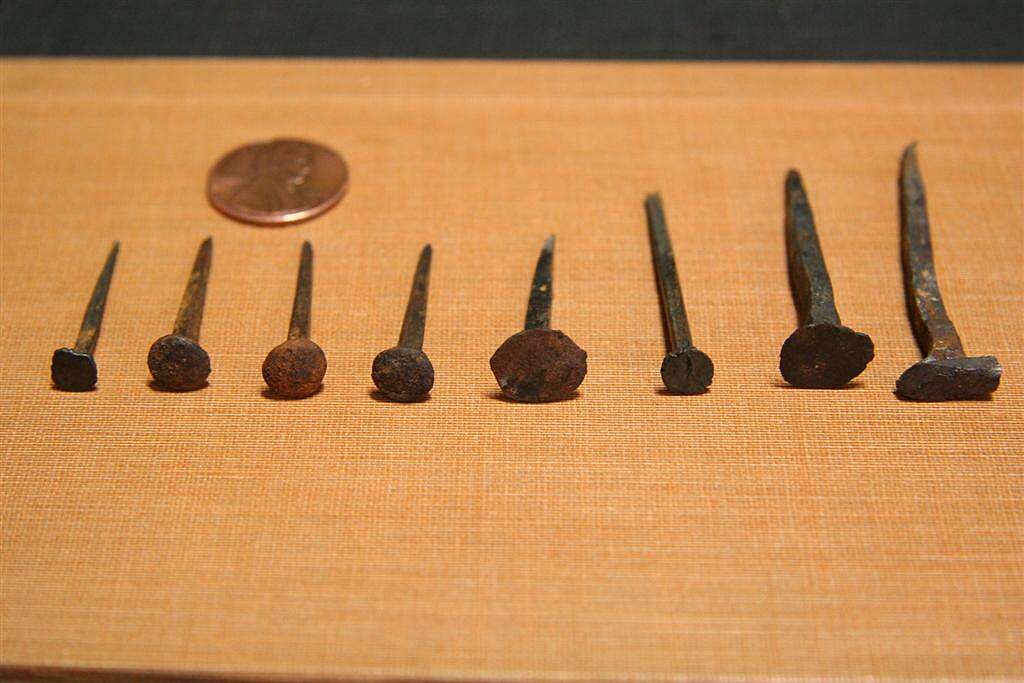
The ancient Egyptians and Romans used organic glue for wood furniture, especially with decorative veneer techniques, but like much advanced technology, glue for wood became a lost art after the collapse of Rome in 476 until the Renaissance, around 1400, when glue and veneer techniques reappeared. During the Middle Ages, furniture was held together with pegs, dovetails, mortise and tenon joints and a few nails.
Archaeologists have found hand made bronze nails from as far back as 3000 BC. The Romans made many of their nails from iron, which was harder, but many ancient iron nails have rusted away since. The hand-forged nail changed little until well into the 1700’s.
For thousands of years, the traditional hand-forged nail was square and tapered, with a hammered head attached by the blacksmith. One nail at a time was heated and laboriously pounded out to shape with a hammer on an anvil. Nails were fairly valuable, and ruined buildings were often burned and nails were scavenged from the ashes to reuse.
Carpenters still speak of nail sizes by the “penny,” abbreviated “d” for the Latin word for penny, denarius. The name refers to the price of nails in England in the 1600’s: the price of 100 nails for one penny gave the size: 100 4d (4 penny) nails cost 4 English pennies or pence. One hundred larger 10d (10 penny) nails cost 10 pence.
Most local blacksmiths made nails. Thomas Jefferson, a true Renaissance man, made nails on his plantation. Until the very end of the 1700’s, most nails in better furniture had a head that was rose-cut or faceted like an old miner’s cut diamond. Here are examples of hand-forged nails with tapered square shafts and hand-hammered heads from the 1700’s:
This immigrant’s pine trunk was made about 1800, and has the original hand painted inscription: “Catherina Iud aus (from) Konigsberg (in East Prussia, Germany) uber (via) Bremen nach (for) Neu Iork (New York).” Although some hardware has been added , it has beautiful rose-cut, hand forged nails securing the original iron bindings.
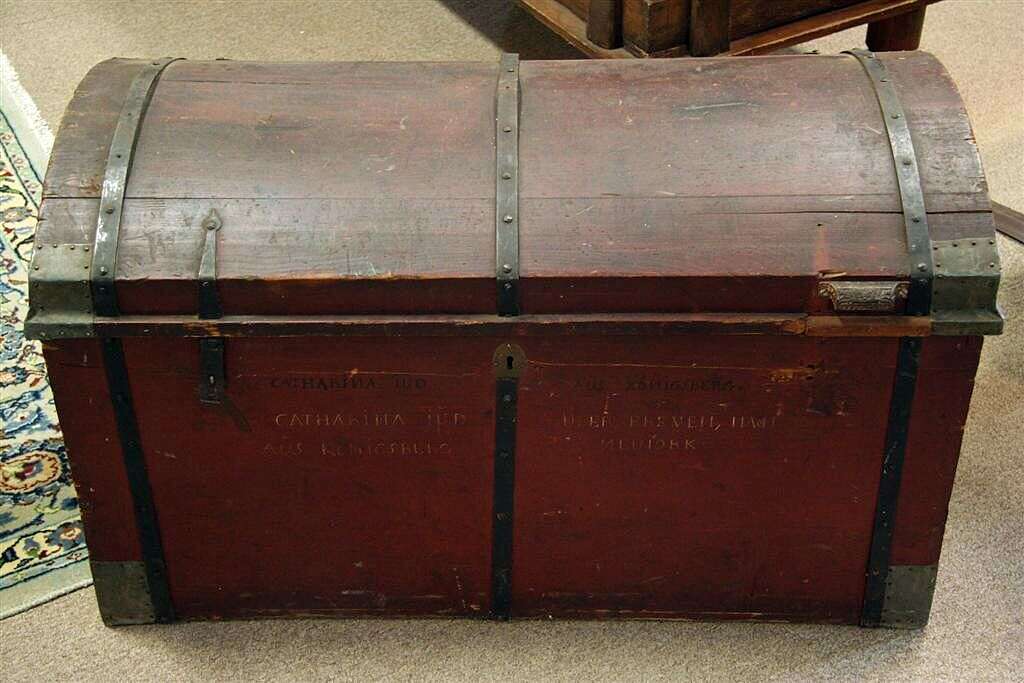
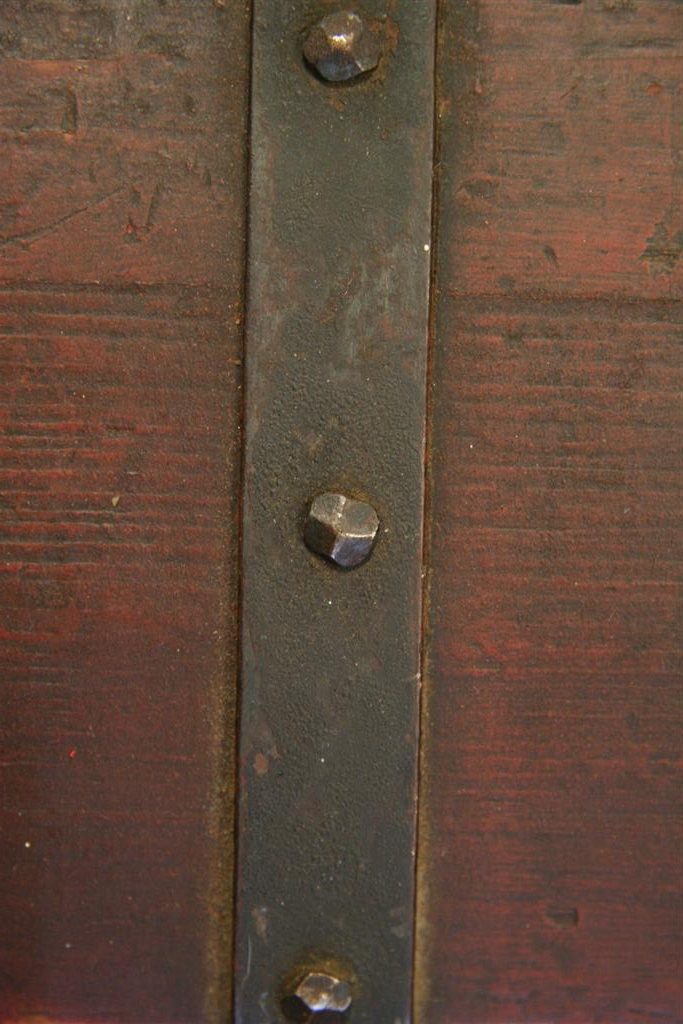
Some nail heads were “butterfly” shaped, with visible facets where the iron head was hand-hammered, one nail at a time.
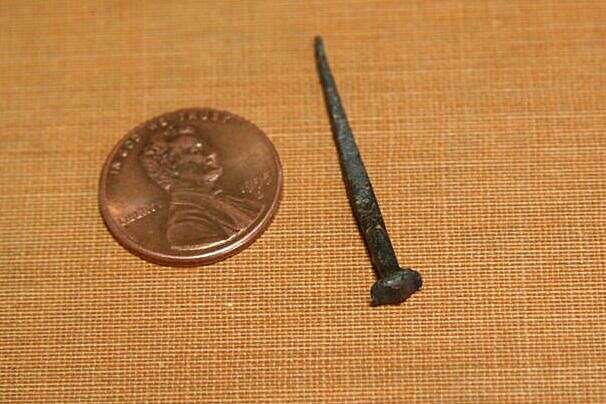
The next phase of progress in nails was the appearance of “cut” nails, beginning in the very late 1700’s. As plates of flat steel became available, a simple hardened steel knife was used to “cut” one tapered rectangular nail at a time. This new technology was also employed by Jefferson, and the new cut nails had rectangular heads attached by another machine, one nail at a time. This greatly accelerated the manufacture of nails, and these rectangular nails quickly became dominant by the early 1800’s. These cut nails are often called “square,” but they are really markedly rectangular, as are their heads, and easy to distinguish from the truly square and entirely handmade earlier variety.
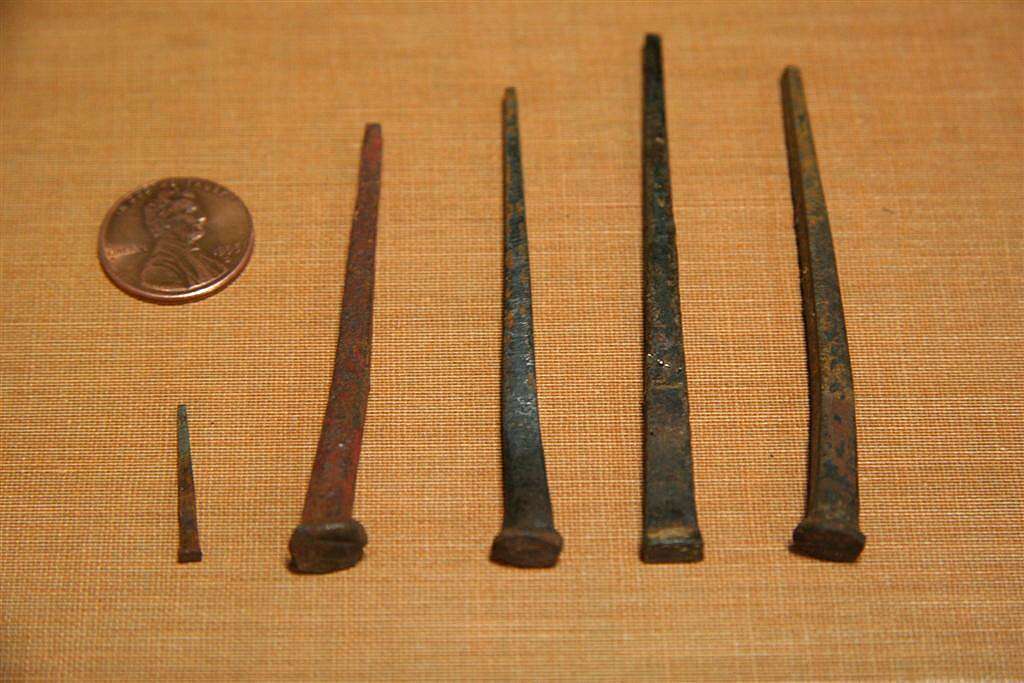
Very tiny nails, used especially for trim and moldings, were made with a single cut, resulting in an “L-shaped” nail. Here are examples of small cut nails from the early 1800’s:
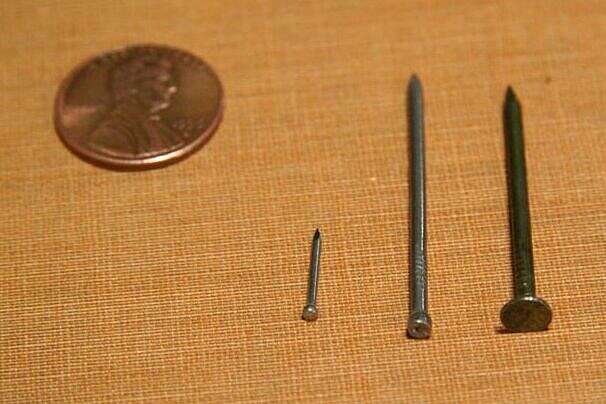
Cut nails continued as the standard until the end of the 1800’s, and were used in building construction, ships and furniture. These nails fairly accurately date furniture to the 1900’s, although it is worth remembering that sometimes modern nails were added in subsequent repairs.
Machinery was developed to produce cut nails in the 1900’s, and they are still used in flooring and concrete applications, where holding power is paramount, and power nailing tools are standard. Machine made cut nails are also made for use in reproduction or hobbyist replica furniture, but they are so perfect and identical that it is usually easy to see that they are new. This is an example of a replica cut nail:
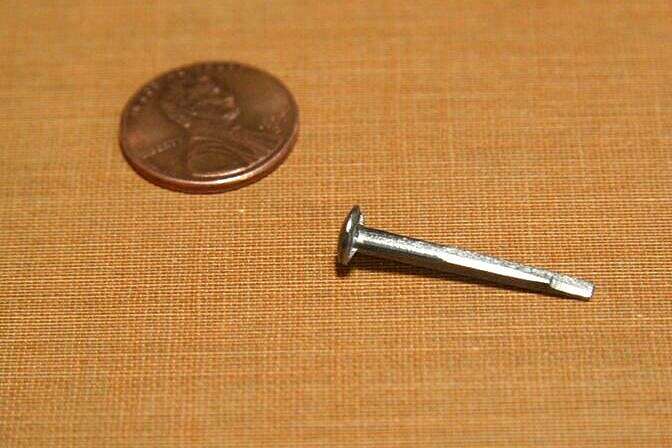
In Europe in the 1850’s, steel wire was made into tiny nails known as “brads,” with only a very small widened head. These continue to be used to attach small moldings and trim.
About 1880 in America and in Europe, the modern wire nail was developed. Machinery was invented to cut pieces of steel wire, sharpen a point at one end, and put a flat round head onto the other end. These nails were much cheaper to produce. Because their sides were straight rather than tapered, they have only a fraction of the holding power of cut nails with tapered sides. Nevertheless, the reduced cost factor made wire nails the standard very quickly. By 1910, wire nails were 90% of the total market. A reasonable date for furniture originally constructed with round wire nails is after 1880. Here are examples of the modern straight-sided manufactured wire nail:

The simple nail serves as a key to furniture dating. Until about 1800, nails were hand-forged – tapered square shafts and hand-hammered heads. During the 1800’s, cut nails have tapered rectangular shafts and rectangular heads. In the 1900’s, the round wire nail with straight sides and a round head are the standard. Nails are one of many clues to the age and authenticity of antique furniture and building construction as well.
